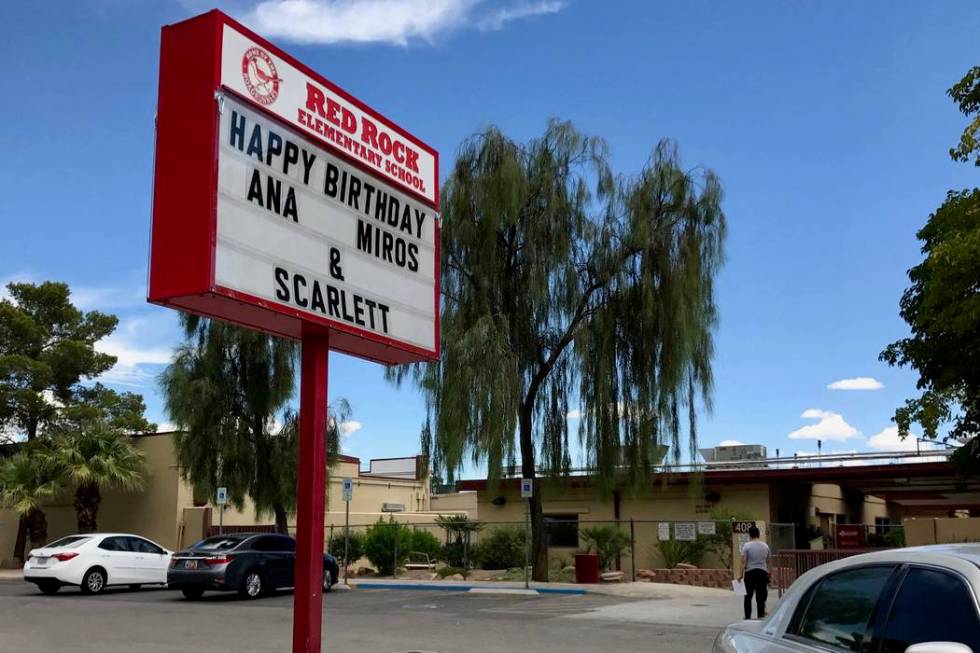Healthy-snacks program spreads to 35 elementary schools in Las Vegas Valley

Sweet potato sticks or yellow squash? Kumquats or persimmons? Edamame or sugar snap peas?
Every student at 35 low-income elementary schools across Clark County will have access to these fruit and vegetable snack options during class this year because of a grant from the U.S. Department of Agriculture. Two schools in the southwest valley, Diskin and Red Rock, are participating in the program.
Diskin joined the program in 2008, the program’s inaugural year in the district, and Red Rock joined in 2016.
“Being at a Title I school, kids don’t have the opportunity to experience some of these (fruits and vegetables) because parents often can’t afford it,” Red Rock assistant principal Nikki Longmore said.
Districtwide, it’s an increase from the 30 schools that received the grant last year, according to Lory Hayon, a registered dietician with the district.
Produce is delivered to the district’s food-service warehouse, where it is washed and cut. School administrators place weekly orders, and vegetables are shipped to each campus. Teachers are responsible for picking up the fruit and vegetable snacks from the cafeteria on delivery days and distributing them during class.
“They can definitely reach more students (during class),” Hayon said. “Once the lunch bell rings, chaos ensues.”
A student at one of these 35 schools might snack on rutabaga sticks on Friday then, the following week, try green beans, edamame, sugar snap peas, Asian pears, jicama sticks or cantaloupe.
Schools approved for the grant are required to have at least 50 percent of students on free or reduced meals. Longmore helped write the grant for Red Rock, where last year more than 85 percent of students received free or reduced lunch.
Longmore orders the snacks two or three times a week. Some of them are incorporated into lessons, she said.
“But any time there’s a new fruit or vegetable they perhaps haven’t had, they talk about what it is and where it’s grown,” Longmore said. She said such lessons may become more common when the school’s new garden is ready in late September.
Offerings are based on what’s available seasonally and will change throughout the year, Hayon said.
The federal program was established in 2002 and expanded to all 50 states in 2008, according to the USDA’s website. Each school receives between $50 and $75 per student for the school year to purchase extra fruits and vegetables.
While Longmore said she could order fruits and vegetables for every day of the week, she doesn’t want it to become a burden for teachers, who take time out of their lessons to distribute snacks. But if she sees an interesting item on the menu — kumquats, for example — she’ll order it, she said.
Mango with chili lime powder is a student favorite. The least popular item Longmore has introduced to Red Rock students?
“They don’t like broccoli. They complain that it smells horrible,” Longmore said.
Some things never change.
Contact Madelyn Reese at mreese@viewnews.com or 702-383-0497. Follow @MadelynGReese on Twitter.